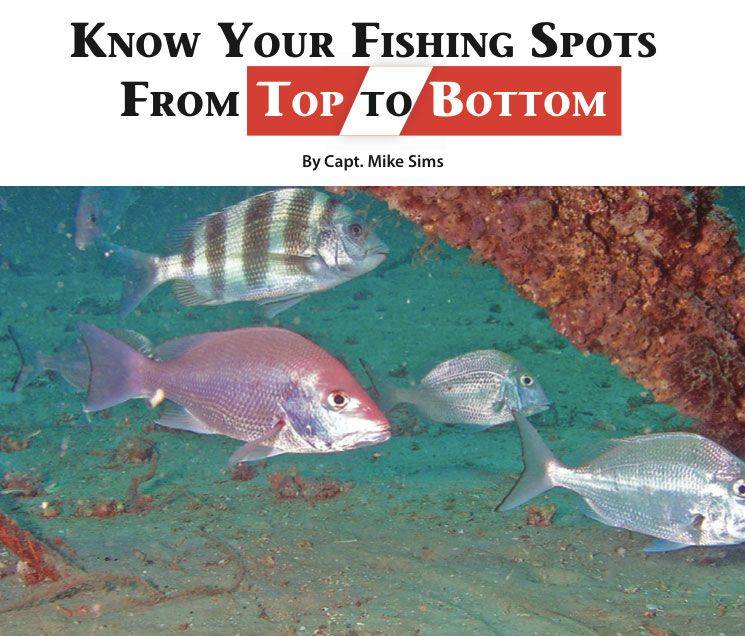By Capt. Mike Sims
[dropcap]H[/dropcap]ave you ever been offshore fishing and something hit your line, only to hang you up, but you never knew what it was? Well, have you ever seen the bottom that you are fishing with your own eyes? If not, you should consider scuba diving. Scuba brings you face-to-face with the rocks or wrecks you’re fishing so that you can see what the fish see. You will be amazed at the advantage this gives you in the boat.
After fishing for many years and never really understanding how it looked under water, I tried scuba.
Wow, what a difference it made. The impact was felt immediately.
When you know exactly what your spot looks like on the bottom, you learn how to properly fish it so that you don’t get hung up, and you have a better chance of avoiding the “never knew what it was” scenario.
Once certified, I began revisiting all my favorite spots. My goal was to understand them from top to bottom and to study the behavior of the fish I love to catch. I never could have imagined all that I would see when I dove in—fish from top to bottom, fish I had caught before, and fish that I never knew inhabited the wreck. Based on my time spent down below, I learned what the fish do while I’m on the boat.
Let me illustrate one such dive. As soon as I dove in, amberjack in a school as large as 500 encircled me and followed me all the way to the bottom before slowly swimming off out of sight. They returned later in the dive, but I was already able to draw one conclusion based on my observation: anchoring is counterproductive when fishing for amberjack—drifting is a much better option.
Next, I focused on the wreck itself, paying special attention to the fish swimming in and out of its rusted and jagged holes. There were large schools of snapper moving in and out of the wreck as if they were surveying the menu before taking their snack back into the wreck to eat in peace. I noticed the snapper staying in the section of the wreck that was collapsed, not in the sections that were more intact.
In addition to the snapper, there were some nice grouper. The grouper had a tendency to swim away from me, almost to the point where I could barely see them. It was then that I took out my light and got a glimpse of these sharp, jagged, rusty holes.
Littering these holes were hooks, fishing lines and lead weights, and I knew that this was why so many of my lines broke when fishing these wrecks. The fish knew they would never get pulled out of the wreck. My conclusion? Stay just off the wreck, chum the bottom (send down four or five sardines on the first hook to start the feeding frenzy), and wait for the fish to come to me.
I sat on the bottom a little while longer just to take it all in. The bait stayed close to the wreck, moving with the motion of the waves. The bonita would fly by to pick off the baitfish, with the mackerels right behind them. The amberjacks never did seem to get close to the wreck; instead they stayed away from it like they were looking for a stray.
What I learned that day has helped me to fish my favorite spots with greater success. If you haven’t dropped down and studied your favorite spots recently, it’s something to consider. Remember, wrecks and some artificial reefs can change each year due to storms and currents, so be sure to check them out frequently. If you’re not yet certified, you should consider it. You will be seeing your favorite spots from top to bottom before you know it!

